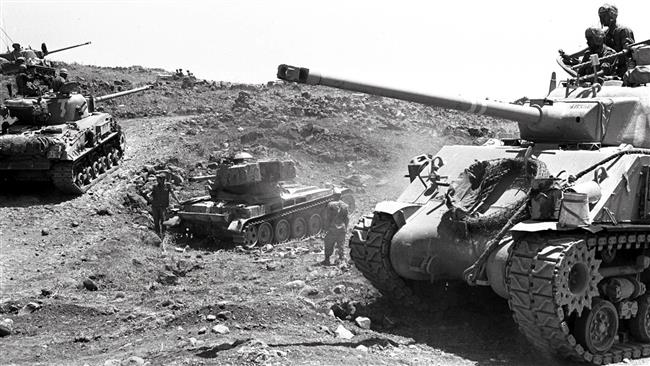
RNA - Retired Israeli Brigadier General Itzhak Yaakov detailed the initiative to Israeli nuclear scholar Avner Cohen in interviews back in 1999 and 2000, whose extracts were published in The New York Times newspaper on Saturday and a full text will be released on Monday.
Yaakov said he had initiated, drafted and promoted the plan, code-named Shimshon or Samson, and it would have been activated if Tel Aviv feared it was going to lose the war.
It would have been the first nuclear explosion used for military purposes since the 1945 US attacks on the Japanese cities of Hiroshima and Nagasaki.
“Look, it was so natural. You’ve got an enemy … How can you stop him? You scare him. If you’ve got something you can scare him with, you scare him,” Yaakov said.
He further called the Israeli project a “doomsday operation,” saying it was aimed at intimidating Egypt as well as Syria, Iraq and Jordan into backing off.
“The goal was to create a new situation on the ground, a situation which would force the great powers to intervene, or a situation which would force the Egyptians to stop and say, ‘Wait a minute, we didn’t prepare for that.’ The objective was to change the picture,” he added.
The site chosen for the atomic blast was a mountaintop about 17 kilometers from an Egyptian military complex at Abu Ageila, a strategic road junction in the north of the Sinai Peninsula.
The project included sending a small Israeli paratrooper force to divert the Egyptian army in Sinai so that another Israeli team could make preparations for the explosion.
Two large helicopters were supposed to deliver the nuclear device and then create a command post in a mountain creek.
The blinding flash and mushroom cloud caused by the planned detonation was estimated to be visible throughout the Sinai, the Negev Desert and perhaps as far away as the Egyptian capital, Cairo.
Yaakov recalled a helicopter reconnaissance flight he made with an Israeli official, during which pilots learned that Egyptian jets were taking off, perhaps to intercept them.
“We got very close. We saw the mountain, and we saw that there is a place to hide there, in some canyon,” he added.
“I still think to this day that we should have done it (nuclear explosion),” Yaakov said.
Cohen described Israel’s atomic blast bid as “the last secret of the 1967 war.”
Israel, which pursues a policy of deliberate ambiguity about its nuclear weapons, is estimated to have 200 to 400 nuclear warheads in its arsenal. The regime has refused to allow inspections of its military nuclear facilities or sign the Non-Proliferation Treaty (NPT).
The Six-Day War was fought between June 5 and 10, 1967 by Israel on the one side and of Egypt, Jordan and Syria on the other. Israel occupied the West Bank, East Jerusalem al-Quds, the Gaza Strip and part of the Golan Heights during the offensive.
In November 1967, the United Nations Security Council adopted Resolution 242, under which Israel is required to withdraw from all territories seized in the war.
847/940